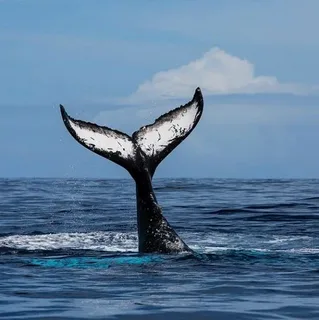Introduction
The term “Whale Tail” has intrigued many over the years. From its roots in fashion to its symbolic presence in art and marine biology, the term carries layers of meaning. Whether you’re here to learn about the thong trend of the early 2000s, the anatomy of whale tails, or the spiritual symbolism of these majestic marine creatures, this article dives deep into every aspect of the topic.
Also Read: WWE SmackDown Episode 1491
What is a Whale Tail?
The term “whale tail” is famously associated with:
- Fashion: The visible thong or G-string above the waistband of low-rise jeans or skirts, resembling the shape of a whale’s tail emerging from the water.
- Marine Biology: The tail of a whale, scientifically known as the fluke, is a powerful tool used for swimming, breaching, and communication.
- Symbolism: Representing freedom, strength, and harmony in various cultures, the whale tail is a widely recognized spiritual symbol.
The Fashion Phenomenon: The Whale Tail Trend
Origins and Rise to Fame
The whale tail trend became iconic during the late 1990s and early 2000s, fueled by the popularity of low-rise jeans. Celebrities like Britney Spears, Paris Hilton, and Christina Aguilera popularized the look, which was daring, rebellious, and unapologetically bold.
The trend wasn’t just a wardrobe malfunction—it was an intentional style statement that represented confidence and sensuality.
Cultural Impact of the Whale Tail
- Pop Culture: TV shows like Friends and music videos of the time often featured the whale tail look, embedding it into the fashion culture of the Y2K era.
- Criticism: Some viewed the trend as controversial, labeling it provocative. Yet, others praised it for challenging societal norms around women’s fashion.
Resurgence in Modern Fashion
In recent years, the whale tail has made a comeback on runways. Designers like Bella Hadid, Dua Lipa, and Versace have reintroduced the trend, proving that fashion is cyclical.
The Anatomy of a Whale Tail
The whale tail, or fluke, is one of the most remarkable features of these marine mammals. Here are some fascinating facts:
- Structure:
- Made of dense connective tissue, the fluke is strong enough to propel whales at high speeds.
- Unlike fish tails, whale flukes are horizontal, allowing them to dive and surface effectively.
- Functionality:
- Used for swimming, diving, and breaching.
- A vital communication tool, with tail slaps on the water signaling warnings or social interactions.
- Diversity:
- Each whale species has a distinct tail shape. For instance, the humpback whale has a scalloped tail, while the orca has a sleek and pointed one.
Symbolism and Spiritual Significance of the Whale Tail
Beyond fashion and biology, the whale tail carries profound symbolic meanings across cultures:
In Indigenous Cultures
- Strength and Protection: Many coastal indigenous communities see the whale tail as a symbol of guidance and protection in the vast oceans.
- Spiritual Harmony: Whales represent a connection between the physical and spiritual worlds.
In Modern Interpretations
- The whale tail is often associated with freedom, resilience, and wisdom.
- It’s a popular design in jewelry and tattoos, symbolizing the wearer’s connection to the sea and nature.
The Whale Tail in Art and Literature
Art
The whale tail has been a favorite subject in paintings and sculptures. Artists often use it to evoke the majesty of the ocean or to symbolize environmental conservation.
Literature
In books like Moby Dick, the whale tail represents mystery and the power of nature. Modern authors use it as a metaphor for personal growth and exploration.
Whale Tail Conservation: The Fight to Save the Oceans
Whales and their tails are under threat due to:
- Climate Change: Rising ocean temperatures affect whale migration and feeding patterns.
- Pollution: Plastics and toxins in the ocean harm whale populations.
- Commercial Whaling: Despite international bans, some countries continue to hunt whales.
Organizations like Sea Shepherd and WWF are working tirelessly to protect these gentle giants and their habitats.
Conclusion
The whale tail is more than just a term—it’s a phenomenon that spans fashion, marine biology, art, and spirituality. From the runways of Paris to the depths of the oceans, its influence is undeniable.
Whether you admire its cultural impact or its natural beauty, the whale tail continues to captivate and inspire.
Also Read: Zinfandel
FAQs About Whale Tail
1. What is the “whale tail” in fashion?
It refers to the visible thong or G-string above the waistband of low-rise pants or skirts, resembling the shape of a whale’s tail.
2. What does a whale tail symbolize?
It symbolizes freedom, strength, resilience, and harmony with nature.
3. How is the whale tail used in art?
It’s often depicted in paintings and sculptures as a representation of the ocean’s beauty and power.
4. What are whale tails made of?
Whale tails, or flukes, are made of dense connective tissue and are incredibly strong, helping whales swim and dive.
5. Is the whale tail trend making a comeback?
Yes, the whale tail trend has re-emerged in modern fashion, with celebrities and designers embracing its nostalgic appeal.






One thought on “Whale Tail: Fashion, Symbolism & Marine Significance”